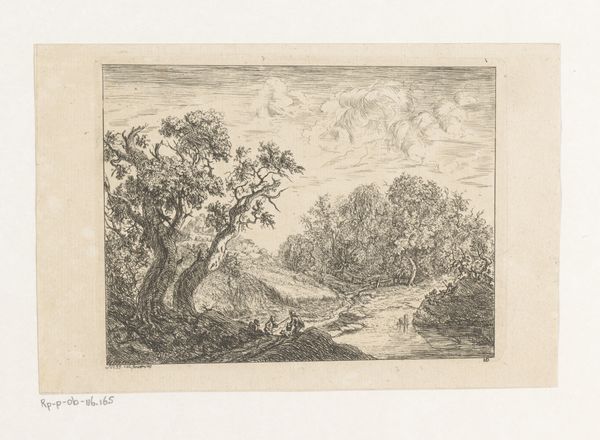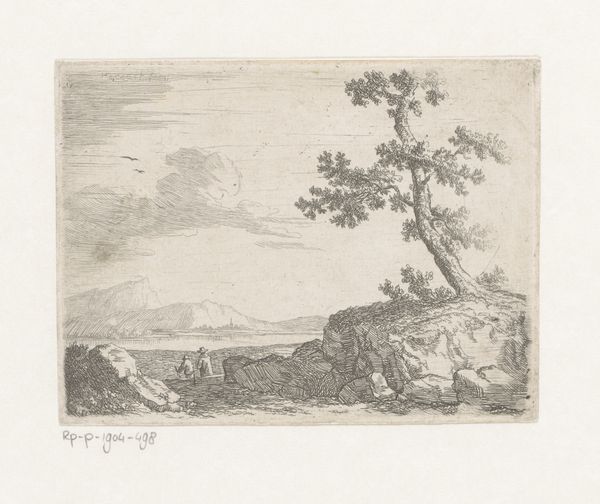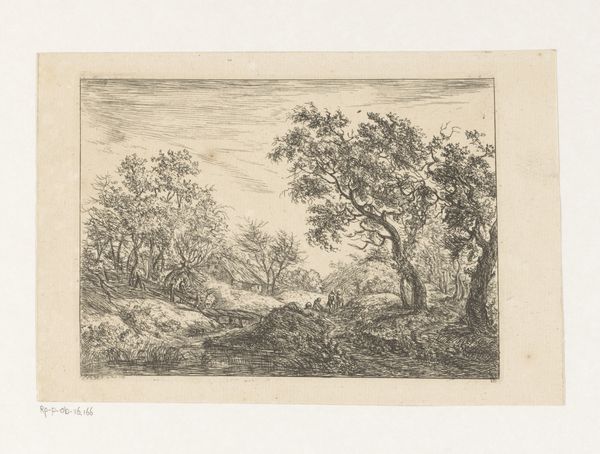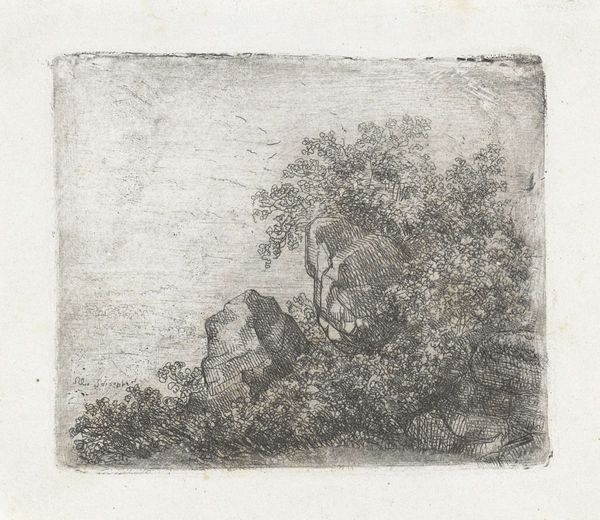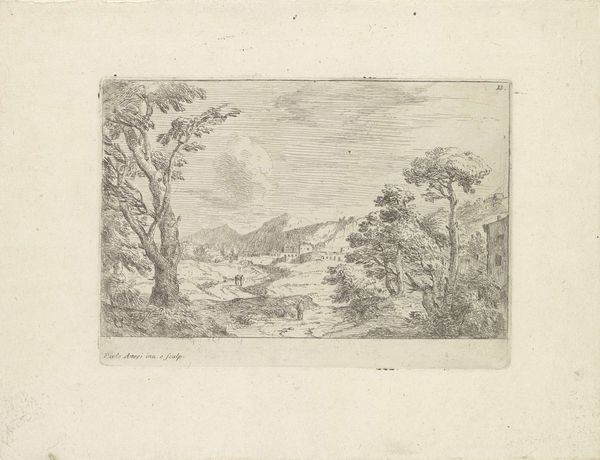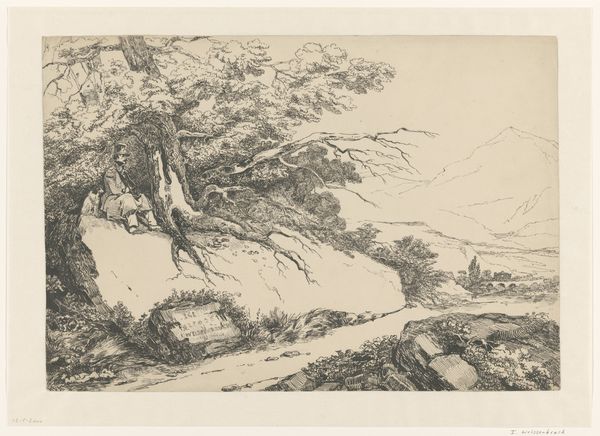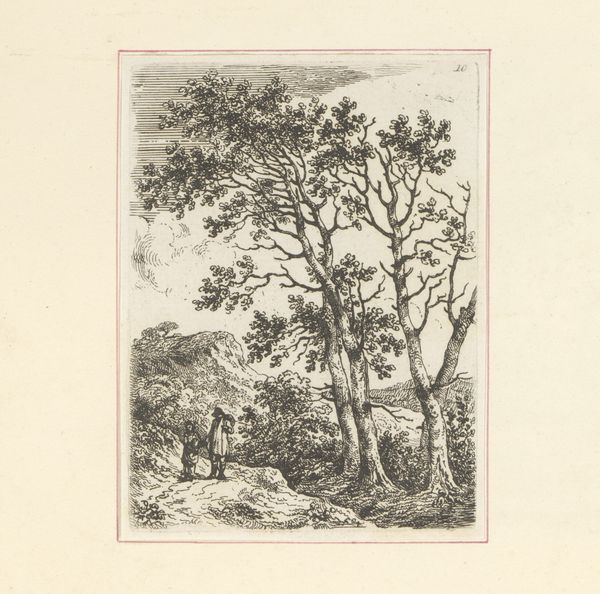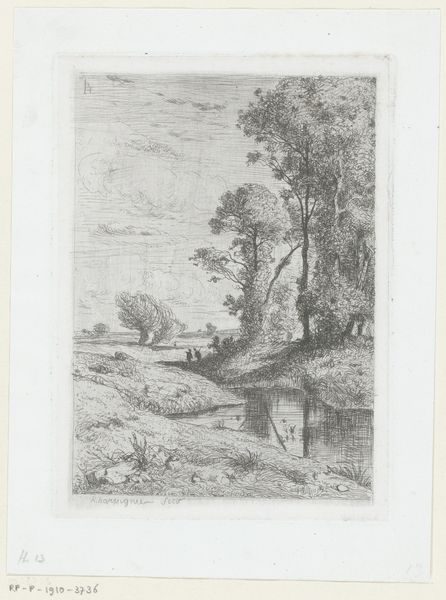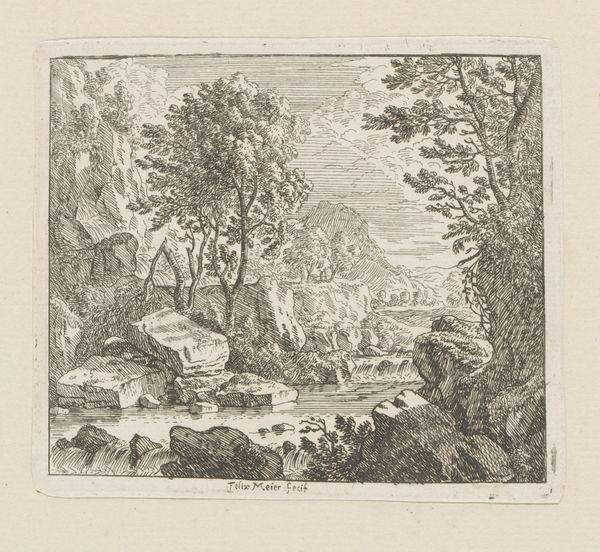
etching, engraving
#
ink drawing
#
pen illustration
#
pen sketch
#
etching
#
pencil sketch
#
landscape
#
ink line art
#
engraving
Dimensions: height 134 mm, width 121 mm
Copyright: Rijks Museum: Open Domain
Curator: This is "Landschap met bomen bij een beek," or "Landscape with Trees by a Brook," an etching and engraving created around 1754 by Philibert Benoît de la Rue. Editor: Immediately, I'm drawn to the almost feverish energy in the lines. It feels less like a serene observation of nature and more like an attempt to capture its raw vitality. The texture practically leaps off the page! Curator: De la Rue was deeply embedded in the artistic circles of 18th-century Paris, where the etching as a medium experienced a surge in popularity, particularly within landscape art. These landscape scenes often appealed to the aristocracy with the goal of being included in collections and large scale albums. Editor: It is fascinating how the composition draws attention to the brook. Given the historical context and patronage from nobility, what natural resource and elements were vital at this moment? Were the brooks sources of power to run their mills or for something else entirely? Curator: While we do not know exactly to which uses the water resource was destined, 18th century landscape imagery gained prominence with a wave of interest by nobility in natural sciences. It goes without saying that images like this provided intellectual credibility in representing the public realm in a way that reflected honor onto their name. Editor: Considering this landscape within this historical lens adds a different dimension. Instead of nature alone, we're seeing an assertion of dominance and control, subtly embedded within what appears to be a simple scene. Even the materiality of the engraving, produced through a specific technique, represents an act of appropriation. Curator: Absolutely, the very act of transforming a natural scene into a print—making it reproducible and distributable—speaks volumes about the changing relationship between the individual and the environment during the Enlightenment era. What appears innocent serves a much broader political function. Editor: I am looking again and I see that that this brook landscape isn’t just trees and water; it's an argument. A visual tool for constructing an idea about nature, nobility, and authority. Curator: Indeed. Looking closely allows us to read landscape prints such as this with more criticality towards their broader cultural function in the 18th century. Editor: Thanks, I’ll never look at landscapes the same way again.
Comments
No comments
Be the first to comment and join the conversation on the ultimate creative platform.
